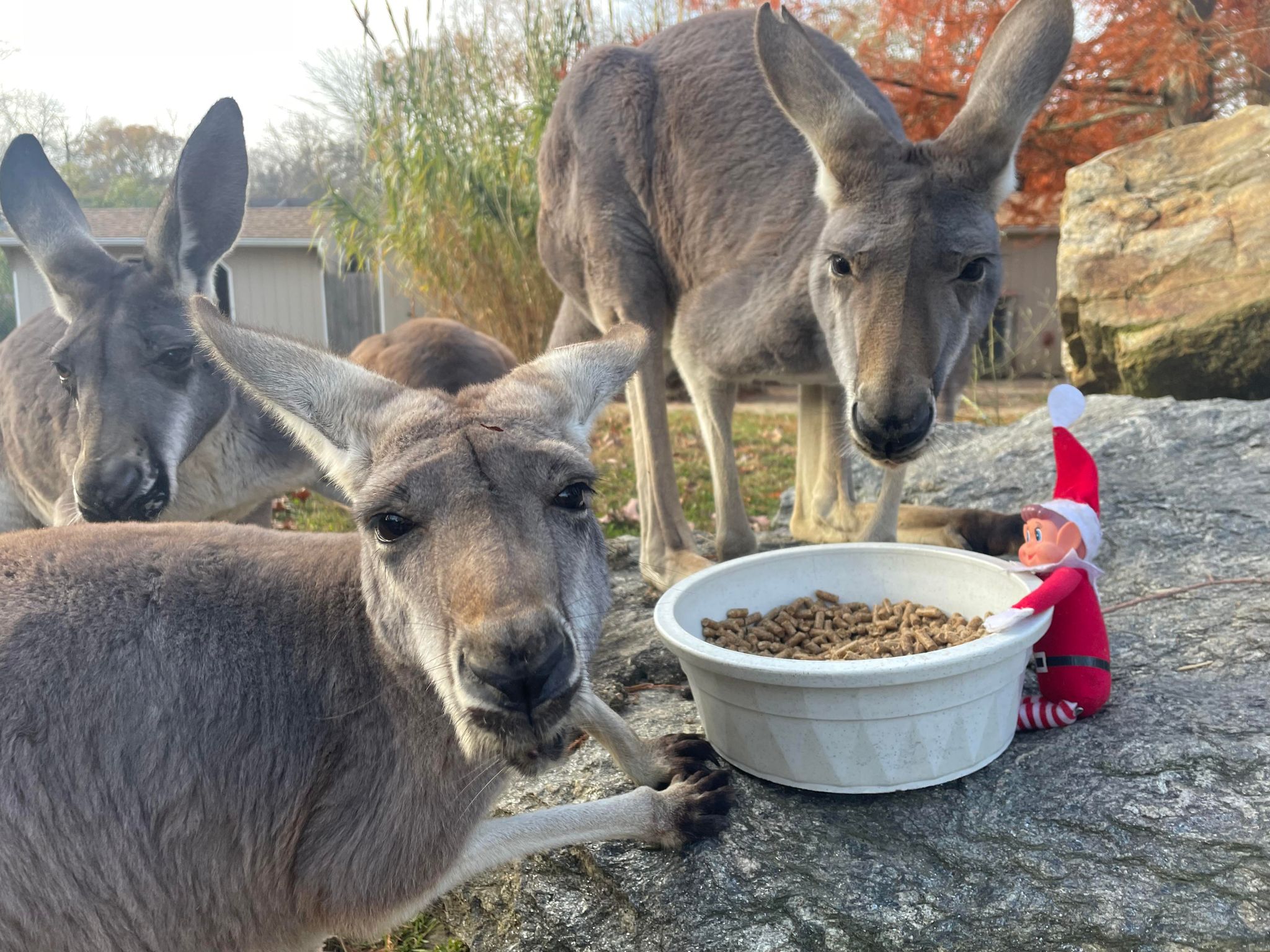– Discover the fascinating world of the red kangaroo, the largest marsupial species.
– Unveil the social dynamics within kangaroo mobs and their unique feeding behaviors.
– Learn about the importance and challenges of feeding kangaroos in zoo environments.
– Explore the critical role zoos play in wildlife conservation and education.
– Gain insights into the day-to-day joys and trials of a zookeeper’s life caring for kangaroos.
Feeding time at the zoo is always exciting, not just for the visitors eager to catch a glimpse of wild behaviors but for the inhabitants, awaiting their carefully prepared diets. Amongst the most intriguing and delightful creatures to observe during these times are the red kangaroos, marsupial giants that call the sprawling landscapes of Australia their home.
The red kangaroo, known scientifically as Macropus rufus, holds the revered title of the largest extant marsupial. These animals are a marvel of evolution, perfectly adapted to their environment with powerful hind legs designed for leaping and a long tail employed for balance. As the sun rises over the zoo’s recreated Australian habitat, the stage is set for a deeper understanding of these extraordinary animals.
Kangaroos in the wild lead complex social lives. They reside in groups called mobs, which provide safety in numbers against predators. Observing the dynamics within these groups is an enlightening experience; kangaroos forge bonds, jostle for hierarchy, and engage in grooming behaviors indicative of close-knit communities.
When it comes to feeding, red kangaroos exhibit fascinating behaviors. In the wild, they are mainly grazers, feeding on grasses and shrubs, their diets fluctuating with the harsh Australian landscape’s often unpredictable bounty. At the zoo, however, their feeding regimes are meticulously planned. A balanced diet adequate for the kangaroos includes hay, fresh vegetables, leafy greens, and specialized grains that emulate the nutrition found in their natural habitat.
The importance of proper diet cannot be overstated in a zoo setting. Each animal has specific nutritional needs that must be met to maintain their health and well-being. To the untrained observer, feeding these creatures might seem straightforward – provide food and allow them to eat. However, the task is intricate, requiring understanding each kangaroo’s dietary requirements, behavioral patterns, and even social standing within the mob.
Zoos serve as modern-day arcs, providing safe havens for species and helping to maintain genetic diversity through breeding programs. In the case of kangaroos, while they are not currently endangered, their well-being in captivity aids in raising awareness of the threats their wild counterparts face, such as habitat loss and climate change. Through education and conservation efforts, zoos empower visitors to take action to preserve the balance of ecosystems.
As the zookeeper makes their rounds, bucket in hand, the kangaroos gather with palpable anticipation. Each animal is fed according to its needs, and the zookeeper carefully monitors the group to ensure each member receives its share. This daily interaction fosters a strong bond between the keeper and the animals, which is essential for effective care and management.
For the zookeeper, each day with the kangaroos blends routine and unpredictability. It is one of tireless dedication and keen observation skills, where understanding the nuances of animal behavior is crucial. The zoo environment presents a unique set of challenges, from ensuring the safety of the animals to crafting engaging educational experiences for visitors.
Enhancing the kangaroo’s enclosure with enrichment items to simulate the foraging behaviors they would exhibit in the wild is a critical element of their care. This not only maintains their physical health but also their mental well-being. In designing these enrichment activities, zookeepers draw from a deep well of creativity, ensuring each day brings something new and stimulating for the kangaroos.
As the sun gradually lowers and the visitors begin to wane, the kangaroos settle for the evening. They lounge, groom, and engage in the occasional about of play, displaying the unique spirit that makes them so endearing. For the zookeeper, the satisfaction of another day contributing to the care and understanding of these magnificent creatures is a profound reward.
In summary, the kangaroo feeding time offers a window into these marsupials’ captivating natural behaviors and social structures. It also highlights the crucial role zoos play in conservation efforts and the dedicated work of zookeepers who strive daily to offer the best care. Their seemingly routine tasks offer endless variations, each contributing to the mosaic of zoo life and the perpetual mission to foster a connection between humans and the natural world.
As visitors leave the zoo grounds, there’s hope that the memories created in front of the kangaroo exhibit will ignite a passion for wildlife and a commitment to its preservation. The time to feed the kangaroos is more than just a spectacle; it embodies the harmonious collaboration between humans, animals, and the environments we share.
*****
Source Description
Time to Feed the Kangaroos!!
Hi, Hermey the elf here! I visited the kangaroos and saw all my old friends – Regis, Jenga, Ollie, Gertroode, Providence, and Roothie! Red kangaroos are the largest marsupial species (animals where the females have pouches to raise their young). These Australian natives can be found in large groups, called mobs, in grasslands and deserts! 🏜
(📷: Zookeeper Steph)


